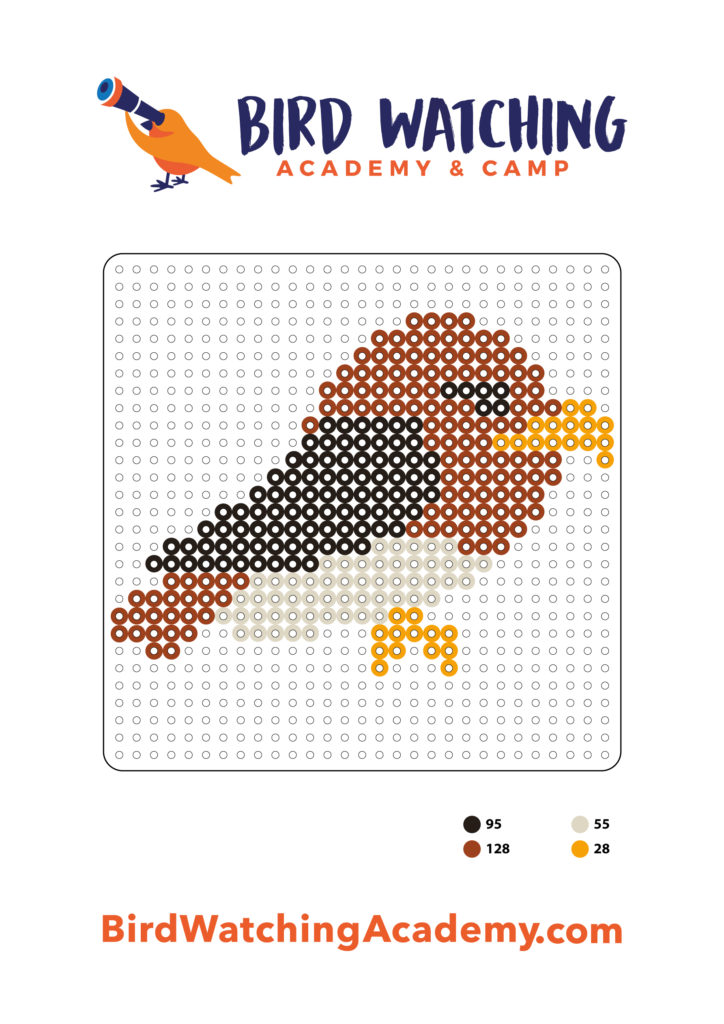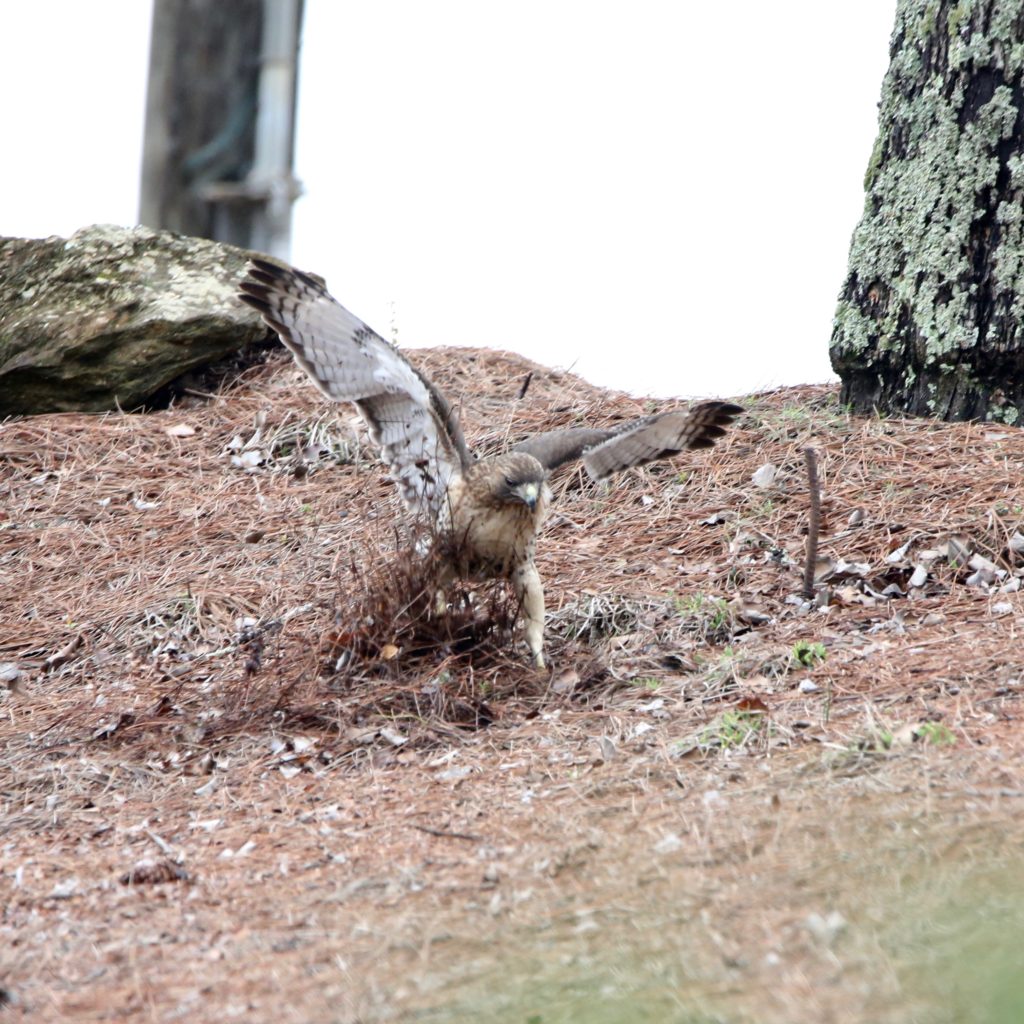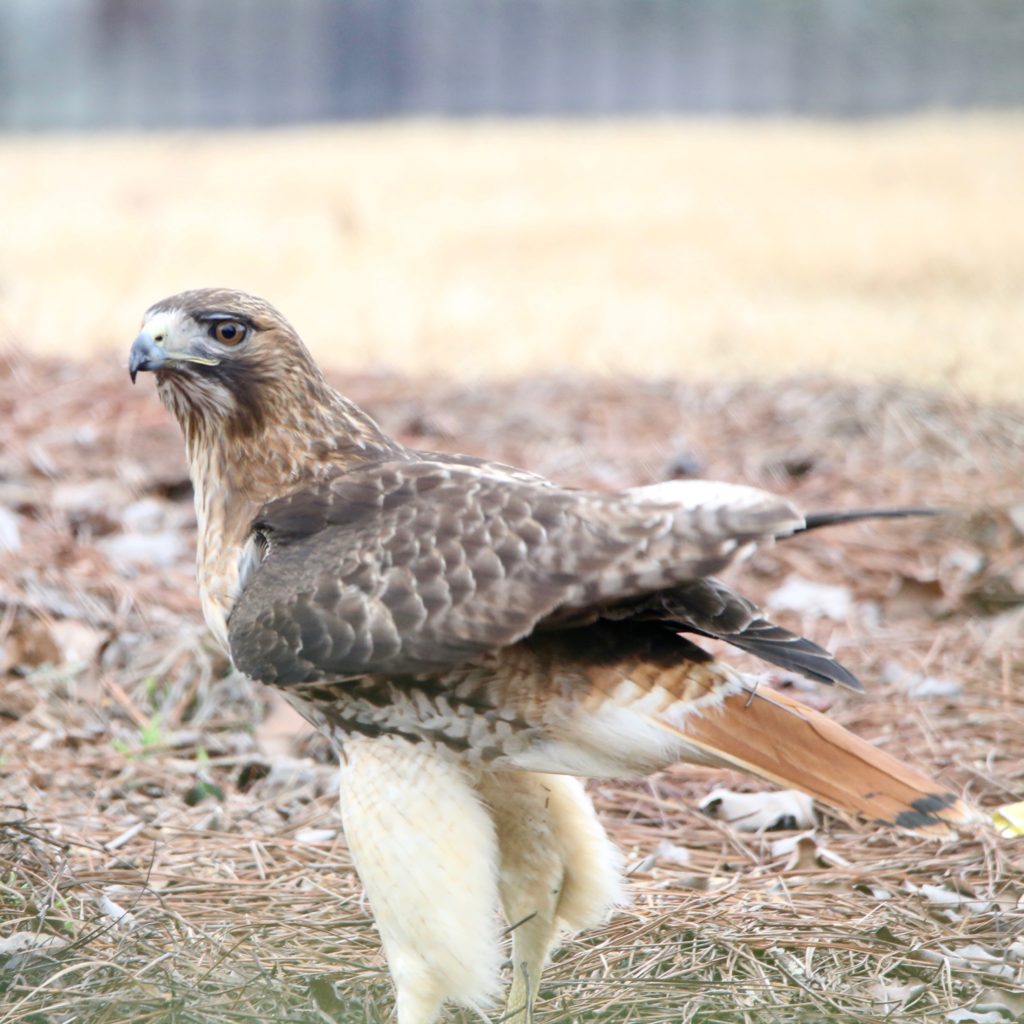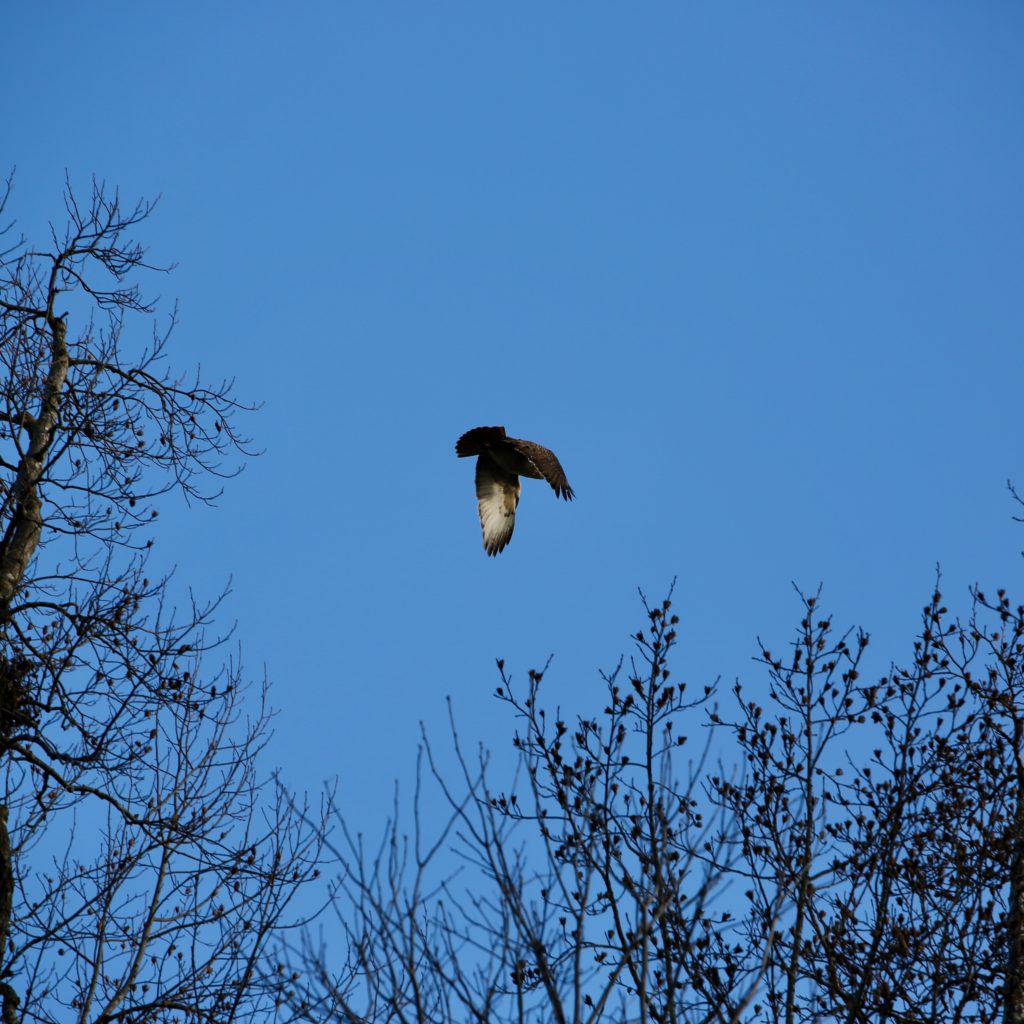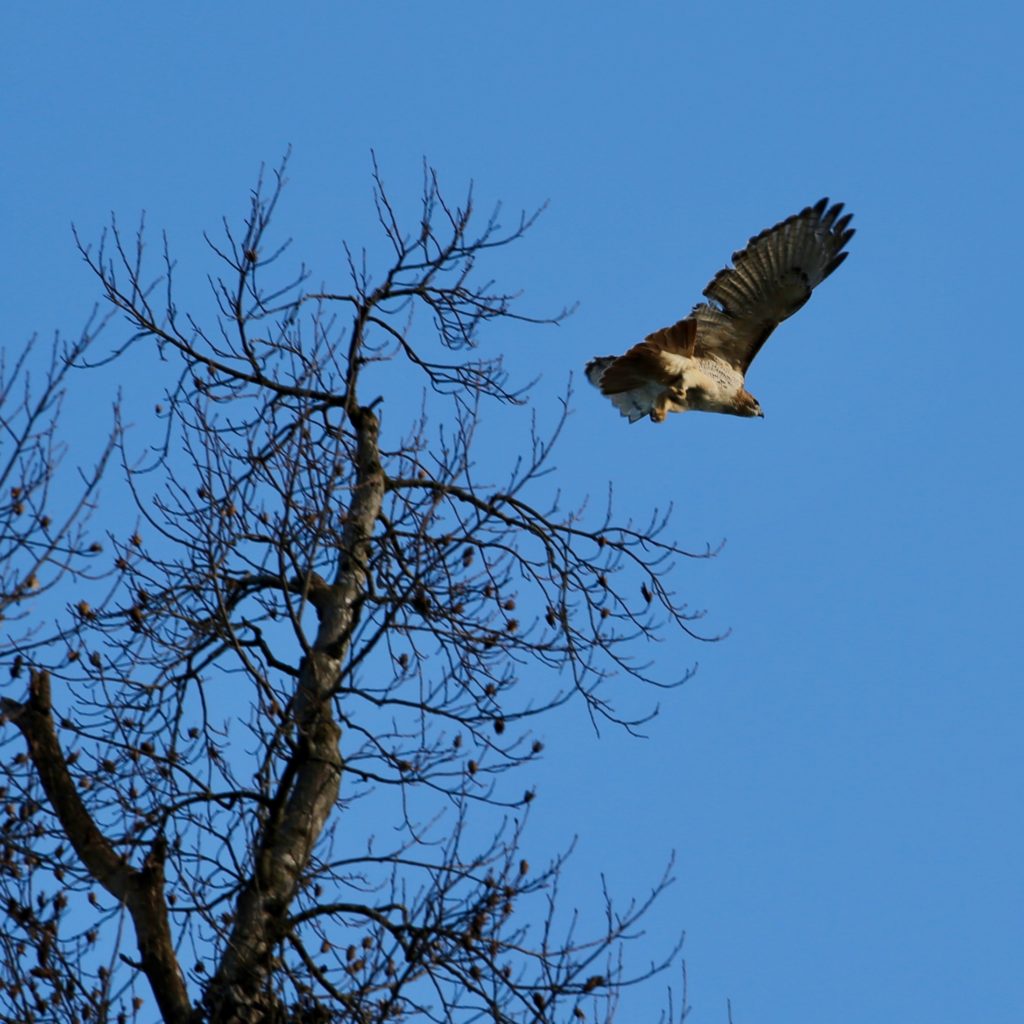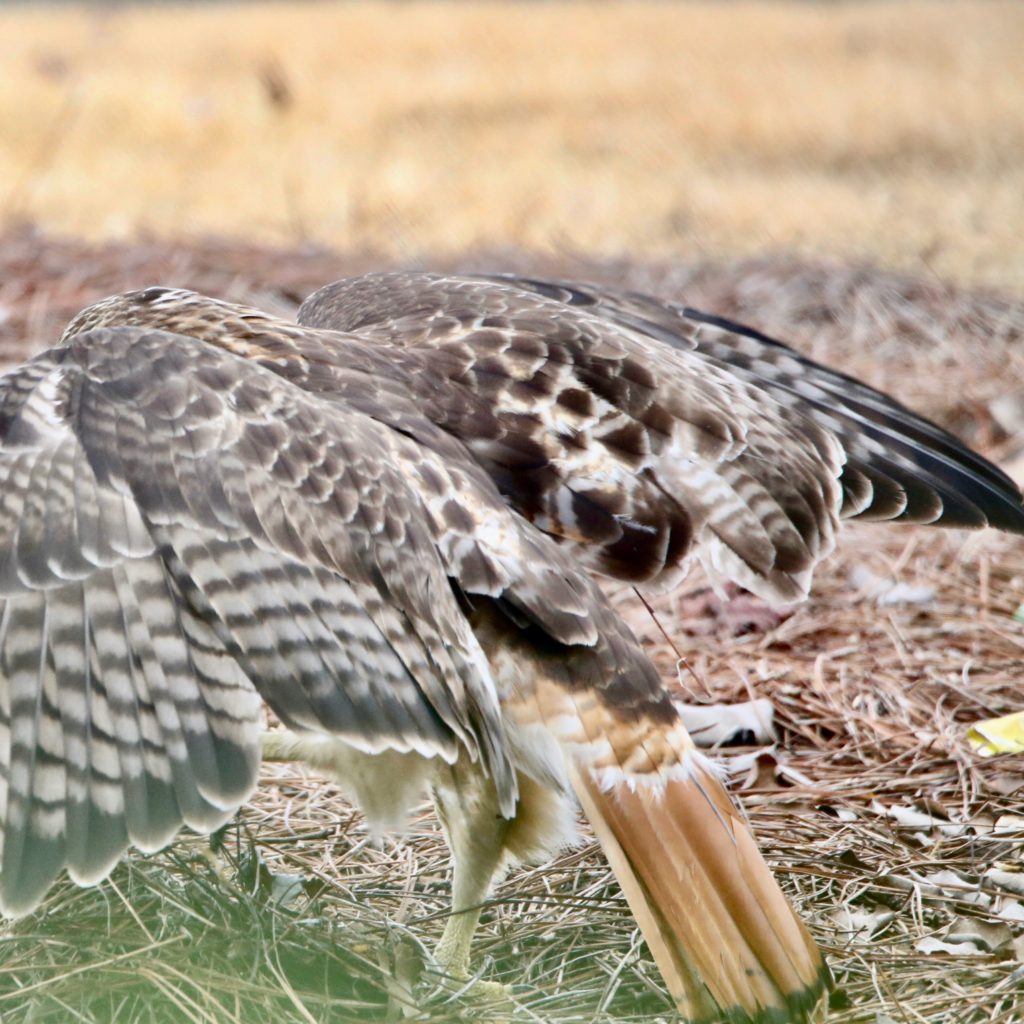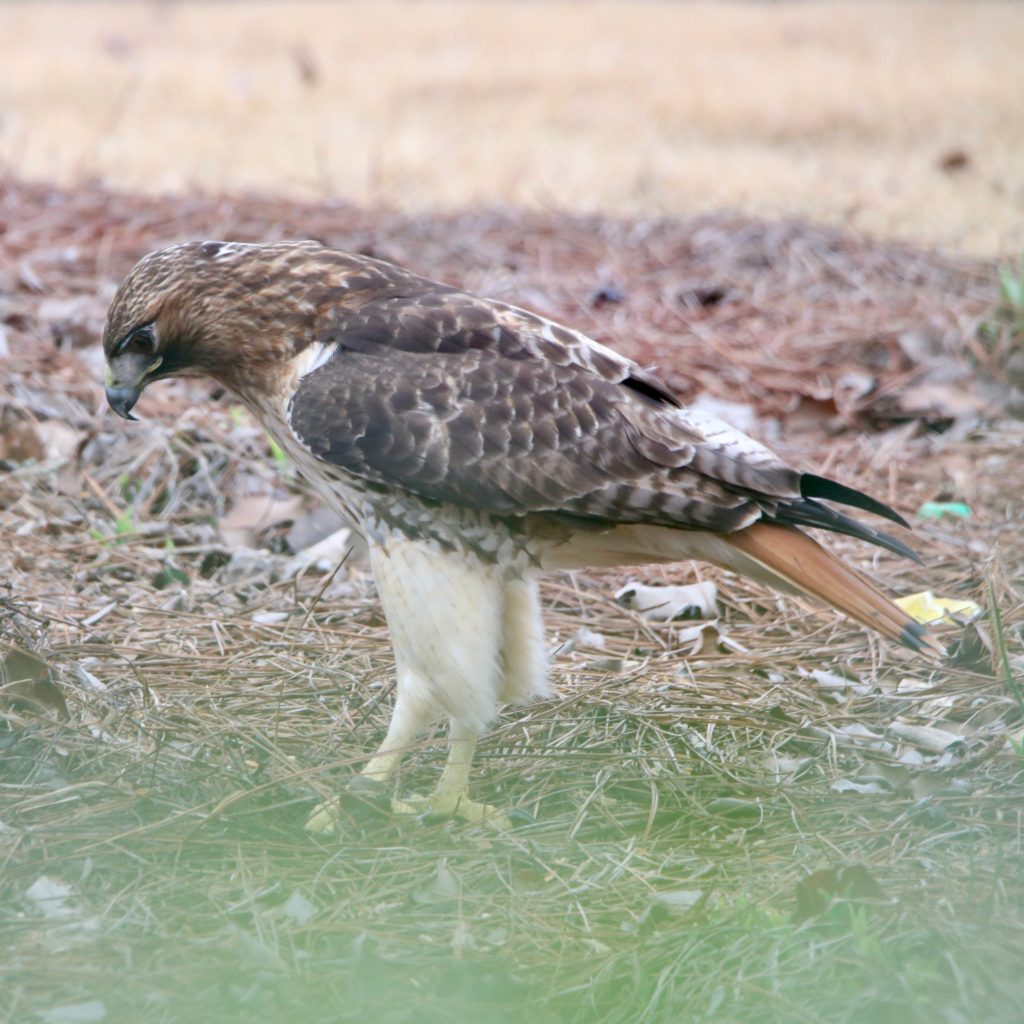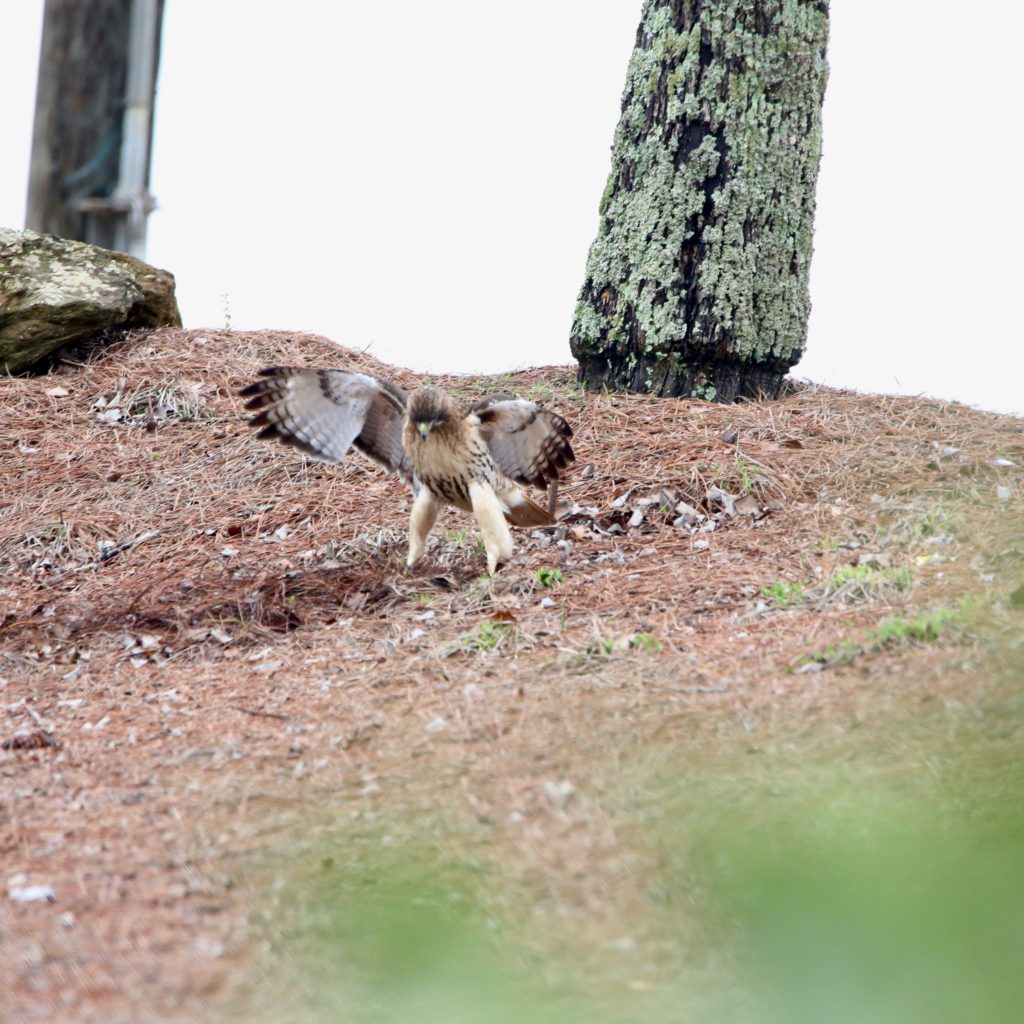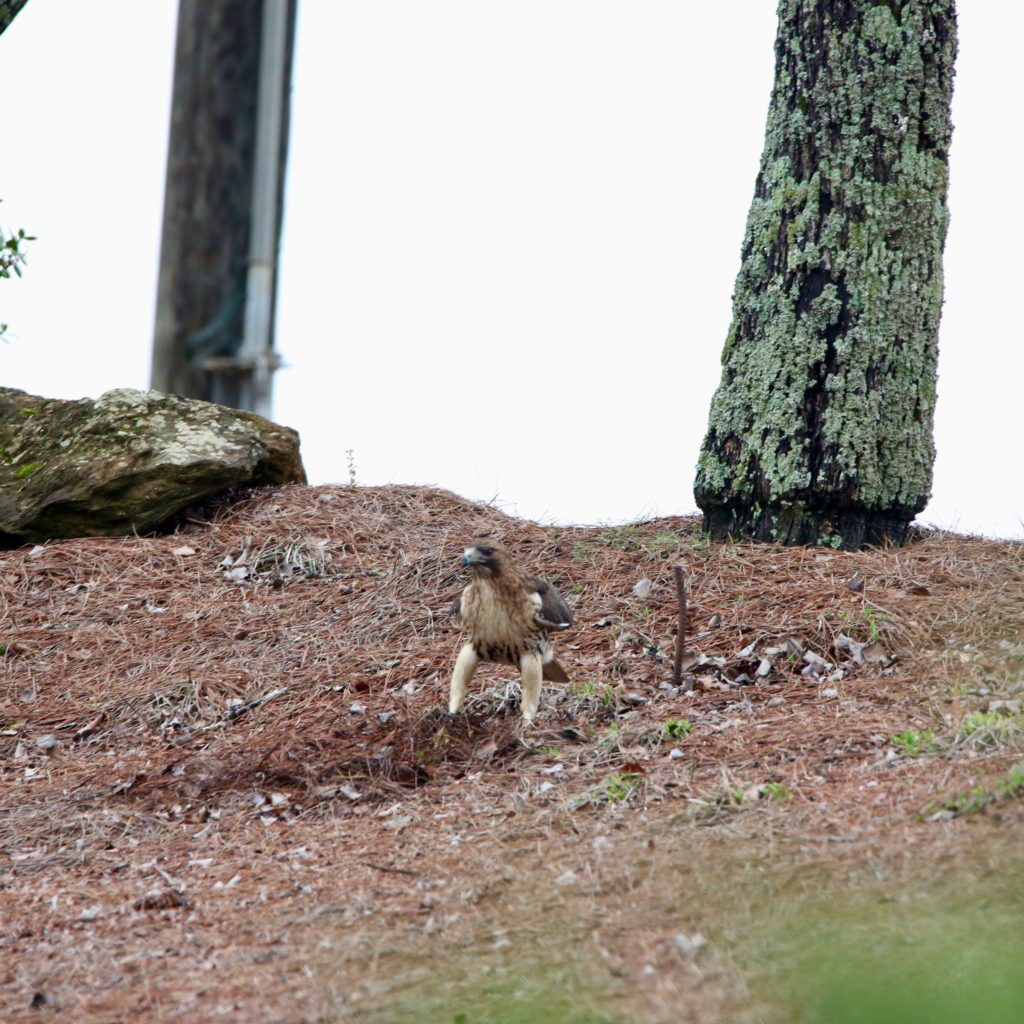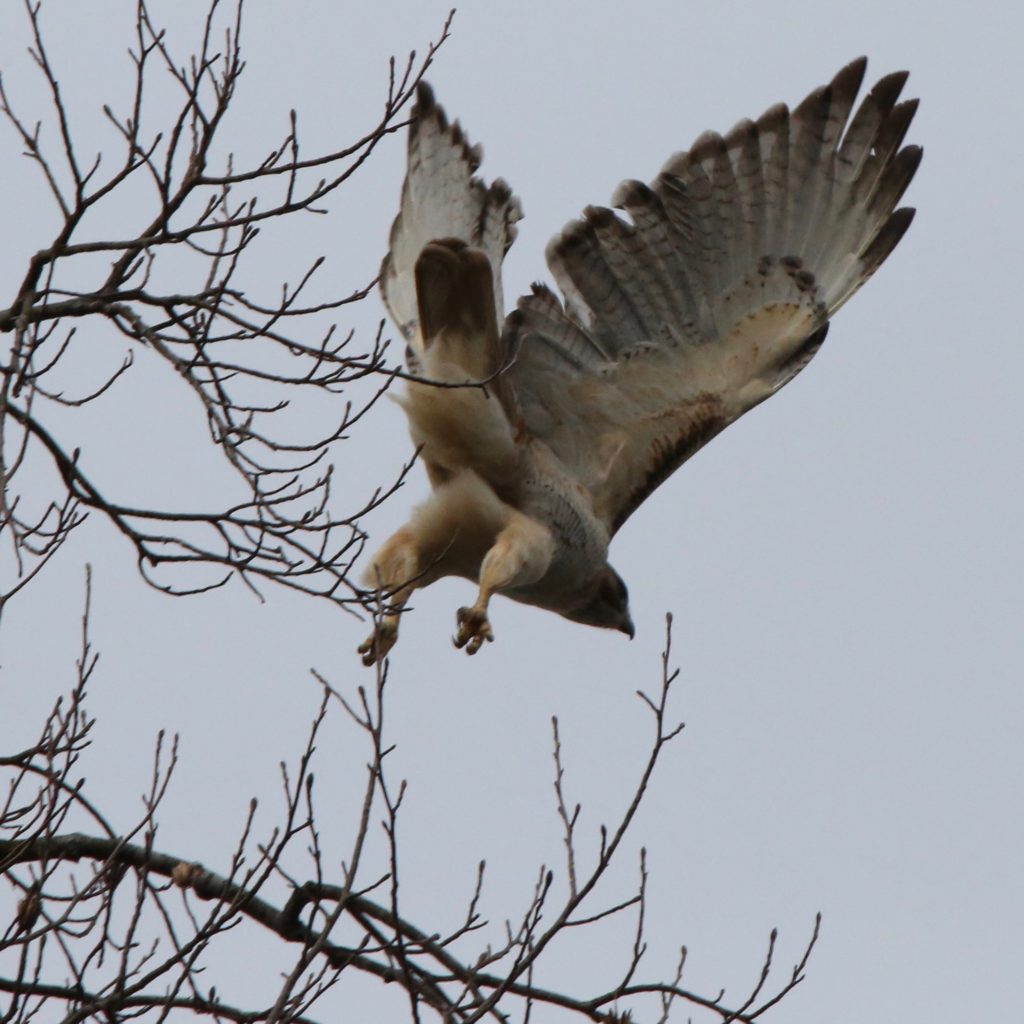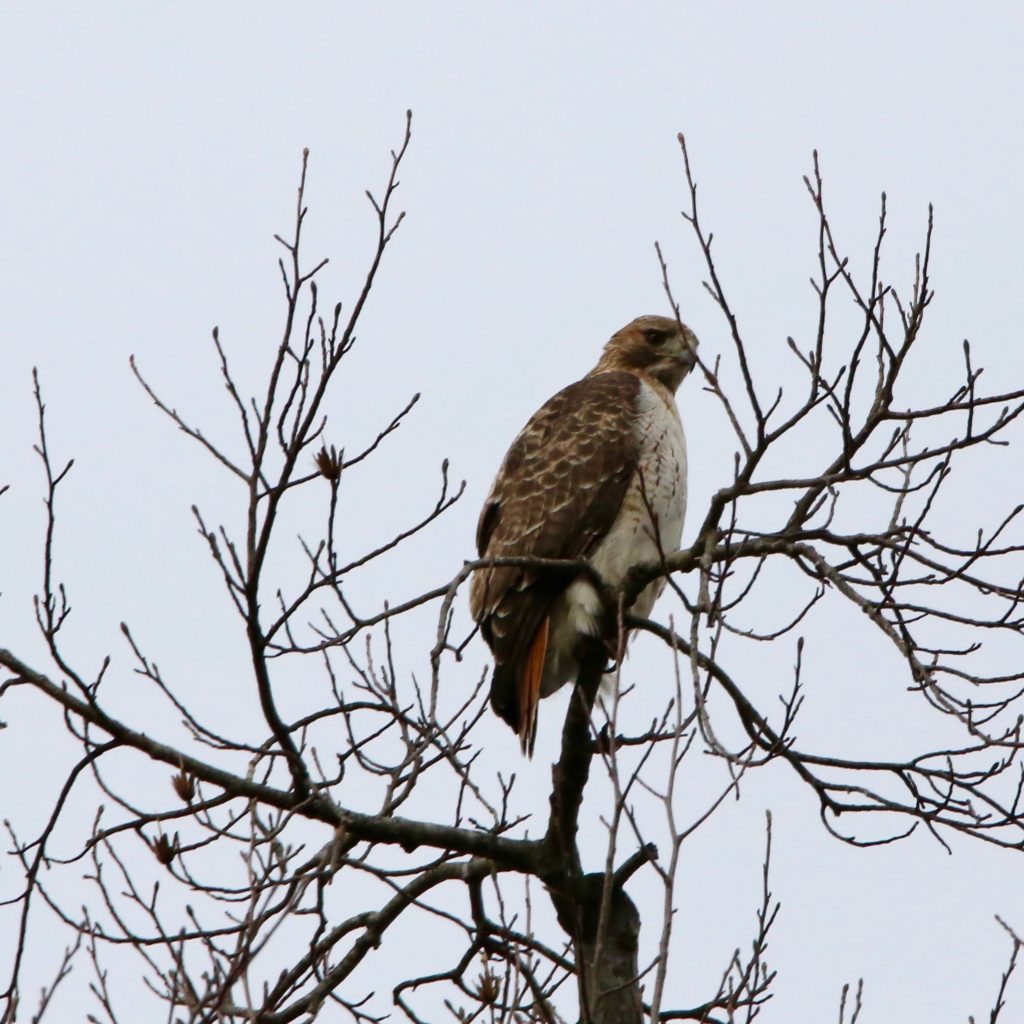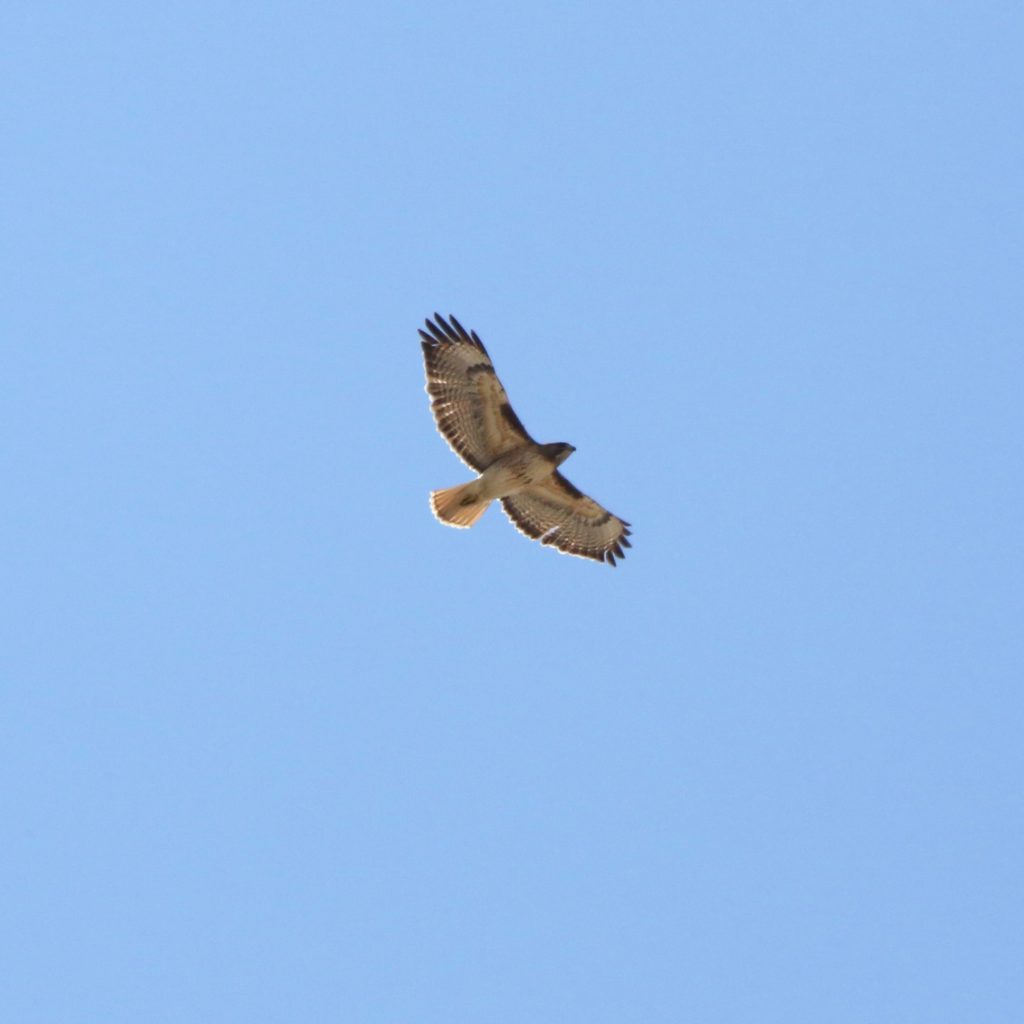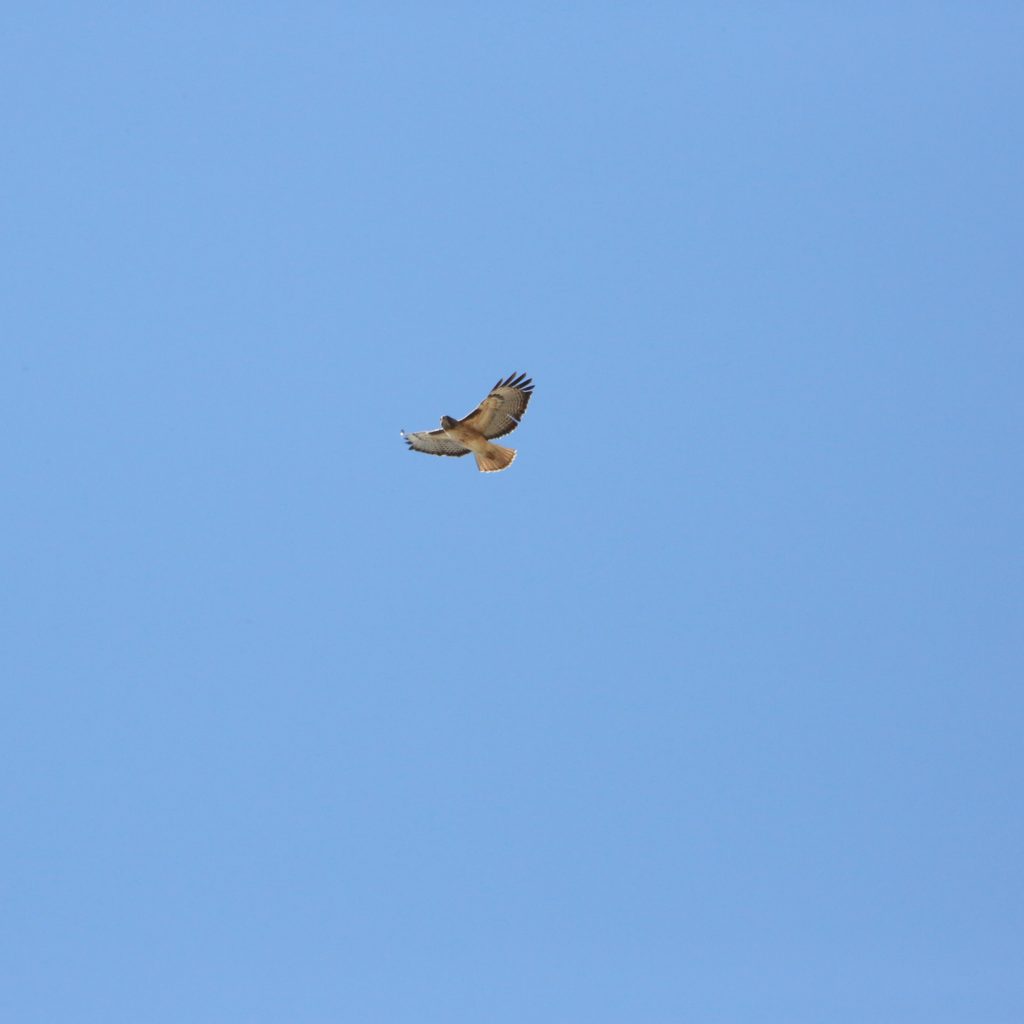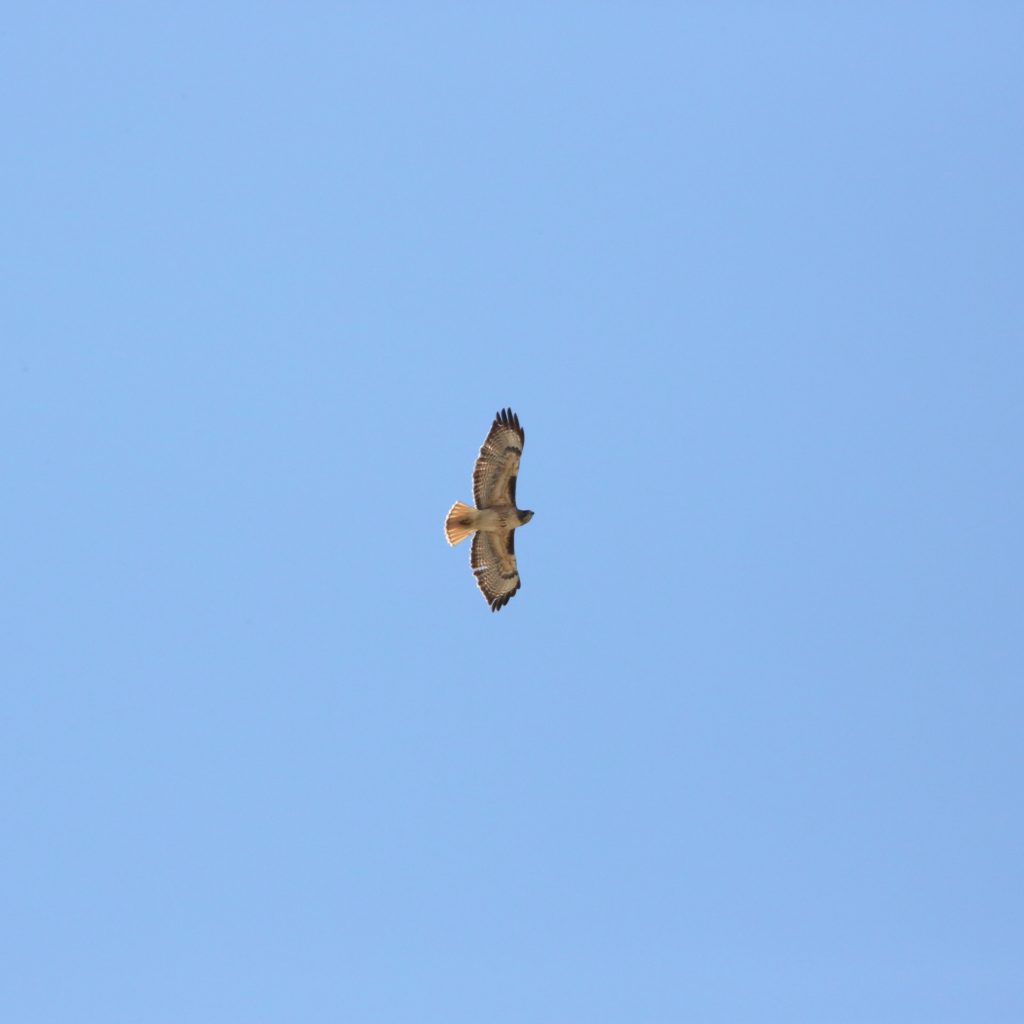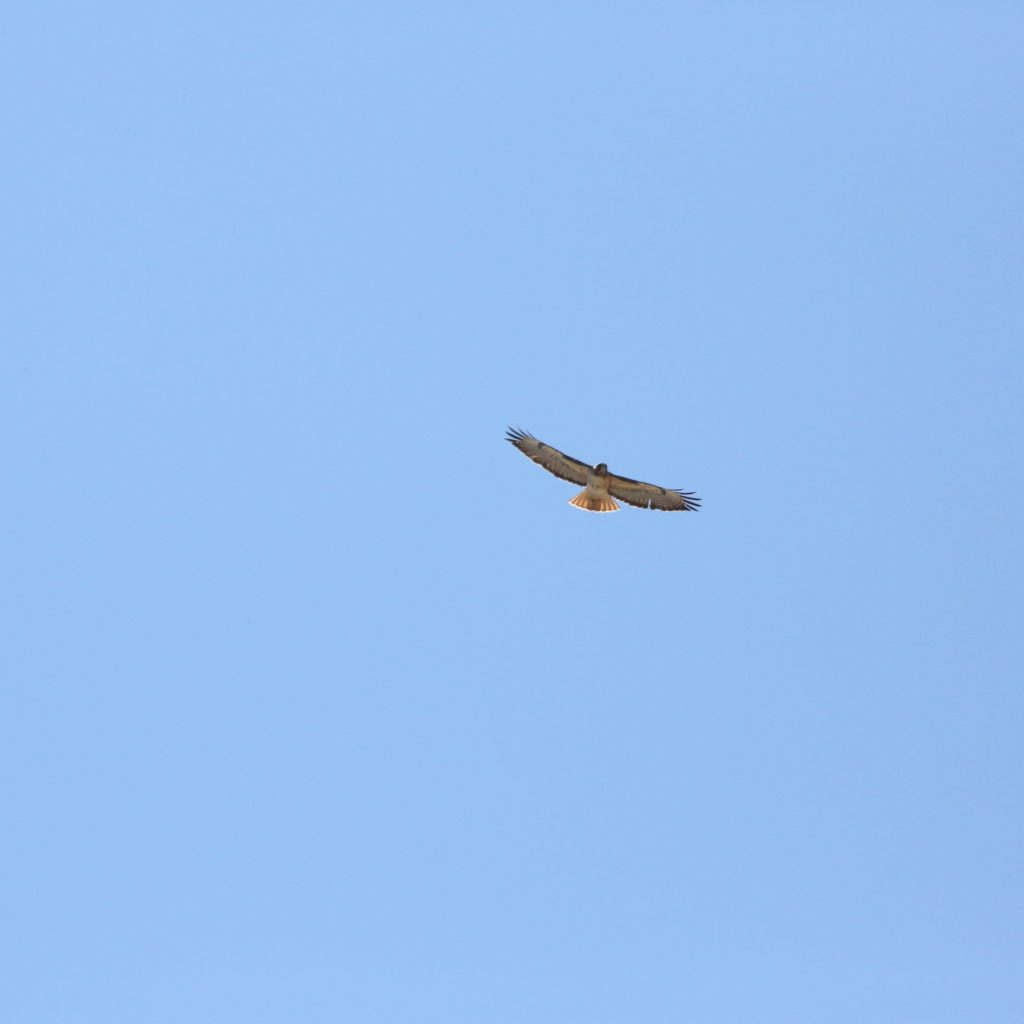
Red-tailed Hawk
A Red-tailed Hawk is a fun bird to see while bird watching. Below are some tips to help you identify Red-tailed Hawks. We have also put together a list of fun Red-tailed Hawk t-shirts, Red-tailed Hawk bird patches, bird houses, bird feeders, binoculars, stickers and other fun bird watching items.
About Red-tailed Hawks
One of North America’s notable most common and widespread hawk is the Red-tailed hawk (Buteo Jamaicensis) commonly seen soaring high in the skies in wide circles. As the name suggests, this bird is usually recognized by their trademark brownish red tail.
Red-tailed Hawk Color Pattern
The top of the Red-tailed hawk is filled with rich brown feathers and its underbelly is a pale gray-brown with a dark band running across it. Its neck and chest are cinnamon colored whereas its tell is a distinct red-brown color.
Description and Identification
Most of the Red-tailed Hawks have a rich-brown top and a pale bottom. They have a dark bar in the region between shoulder to wrist. They possess a reddish-orange tail. Their chest is white, and their belly has a dark streak. When you see a Red-tailed Hawk flying, you will find two chocolate color bars on the leading edge of their wings. They have a hooked beak-like all raptors. The leg, feet, and cere are yellow in color. However, in juvenile Red-tailed Hawks, the tails are brown with darker bars cutting across the fail feathers horizontally. Unlike the reddish-brown irises of mature birds, the immature ones have yellowish ones.
Red-tailed Hawk Size
The Red-tailed hawk is a large bird with very wide and broad wings specifically designed to provide them with effortless soaring.
The relative size for both sexes is:
Male
- Length: 17.7-22.1 in (45-56 cm)
- Weight: 24.3-45.9 oz (690-1300 g)
- Wingspan: 44.9-52.4 in (114-133 cm)
Female
- Length: 17.7-25.6 in (50-65 cm)
- Weight: 31.8-51.5 oz (900-1460 g)
- Wingspan: 44.9-52.4 in (114-133 cm)
NB: The female Red-tailed hawk is typically larger than the male bird
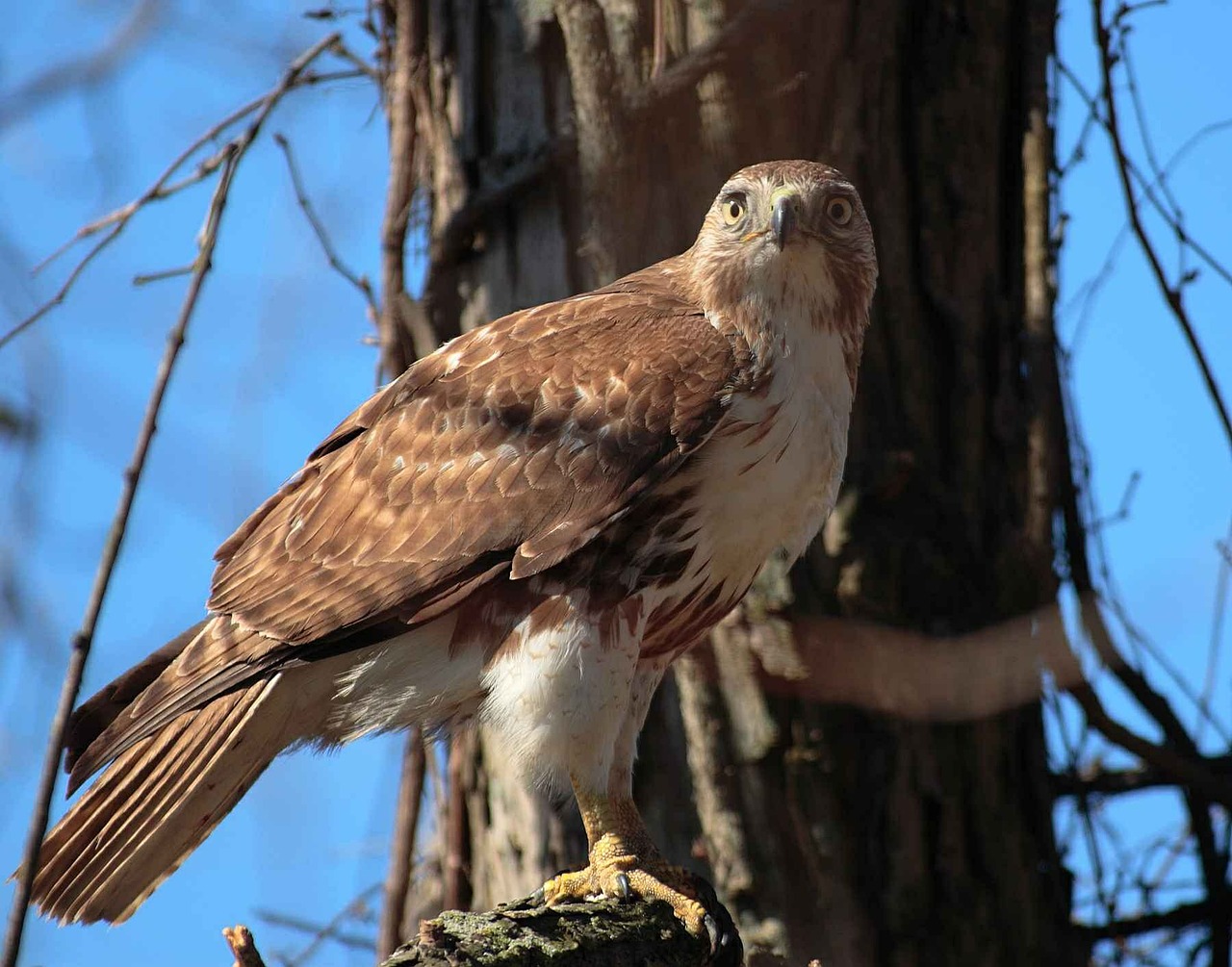
Red-tailed Hawk Behavior
- More often than not, you will see these birds soaring high in the sky in wide circles over fields.
- These predator birds attack in a slow dive with their legs stretched out.
- The Red-tailed pair of birds are very territorial and mate for life in the same territory.
What Red-tailed Hawk Eat
Red-tailed Hawks feed on a wide variety of animals. Mammals usually constitute a major part of their diet. Red-tailed Hawks mostly prefer vertebrates, for example, voles, rodents, bunnies, and ground squirrels. They eat numerous varieties of reptiles too. The birds also readily consume bats, frogs, amphibians, crawlies, and several animals of the same kind. Red-tailed Hawks chase from the air. At the point when a Red-tailed Hawk recognizes a rat, bunny, reptile, or any other prey, it dips down and gets its prey in its claws with a strong grip.
This bird uses its sharp talons to hunt its prey typically made up of rodents and small mammals.
Their varied diet also includes birds and reptiles. This is because their diet varies and is dependent on the seasons and location.
Where Red-tailed Hawks Live and Their Habitat
The Red-tailed Hawks are seen in open fields, particularly near woodlots and farms. It is not a bird of the thick forests and is generally seen in grasslands or marsh-shrub territories. It is also detected in city areas. Red-tailed Hawks mostly prefer open areas like fields, deserts that have perching places around them. These birds are mostly found in the habitats like tropical rainforests, and mountains. They can also adapt to human habitats.
Red-tailed Hawk birds live in forests and open areas that give them ample room to fly high and soar as is their nature. It also prefers places with high perched trees so that it perches itself on them to look for their prey.
Range and Migration
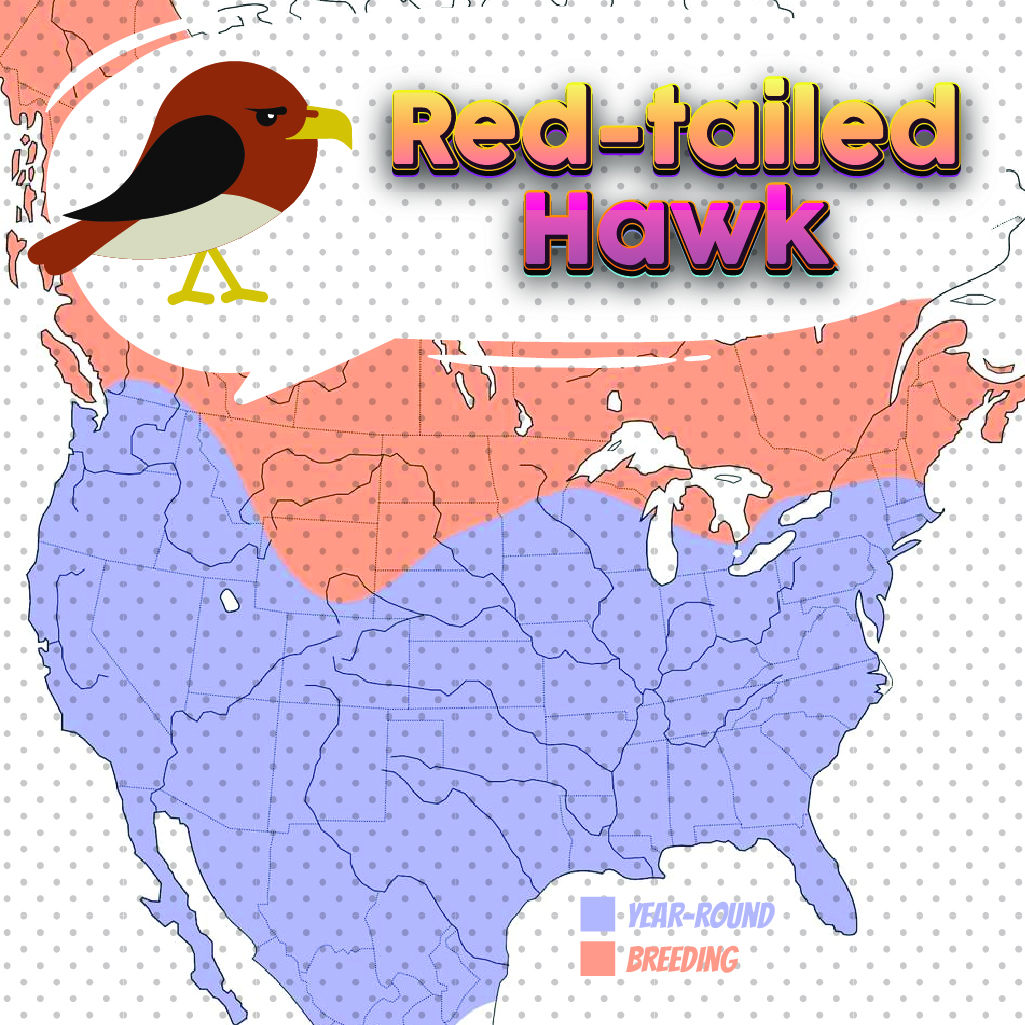
The Red-tailed Hawk’s breeding range stretches from central Alaska to Canada and over the complete United States, south across Mexico and toward Central America. In winter, several northern birds fly south. Red-Tailed Hawks are usually seen as far north as Minnesota every winter. Typically, you can see them in Nearctic regions. They are found in the Northern United States along with Alaska and are round-the-year residents of Central Mexico, West Indies, and small areas of Central America. These birds from Alaska, Canada, and Northern Great Plains migrate to the south for a few months in winter. Immature hawks generally fly after some time the adult hawks migrate and this happens mostly in autumn. Talking of the Great Lakes, the baby hawks come back in May end or start of June.
Nesting
Red-tailed Hawks mostly do not start reproducing till their third year. Couples develop a huge stick-nest near the tip of a tree at the edge of open-canopy forests. The cup of the nest is lined with corn cobs, bark, pine needles, etc. The nest measures 3 feet in width and 6.5 feet in height. Two to four eggs are commonly laid in April or May, hatching in about 30 days. The young reside in the proximity of the nest till they can fly, then watch their parents as they fly to hunt for themselves. Red-tailed Hawks usually put their homes in the crowns of tall trees where they have a broad perspective of the nearby areas. They may likewise settle on a bluff edge or fake structures, for example, windows.
Red-tailed Hawk Lifecycle
The Red-tailed hawk’s breeding season runs from March to May. For this bird, they can begin breeding when they are as young as three years old. The female lays 2-4 white eggs blotched with brown spots that are incubated for nearly 30 days by both the male and female hawk. At 45 days old, the chicks fly out of the nest.
Ornithology
Bird Watching Academy & Camp Subscription Boxes
At Bird Watching Academy & Camp we help kids, youth, and adults get excited and involved in bird watching. We have several monthly subscription boxes that you can subscribe to. Our monthly subscription boxes help kids, youth, and adults learn about birds, bird watching, and bird conservation.
Bird Watching Binoculars for Identifying Red-tailed Hawks
The most common types of bird watching binoculars for viewing Red-tailed Hawks are 8×21 binoculars and 10×42 binoculars. Bird Watching Academy & Camp sells really nice 8×21 binoculars and 10×42 binoculars. You can view and purchase them here.
Red-tailed Hawk T-shirts
If you love the Red-tailed Hawk you should purchase a Bird Watching Academy & Camp T-shirt. To help support bird conservation we donate 10 percent to bird conservation activities.
Red-tailed Hawk Iron On Patches
Kids, Youth, and Adults love to collect our Bird Watching Academy & Camp iron on patches. Our bird watching patches help you keep track of the birds you have seen an identified. You can also display the patches on our Bird Watching Academy & Camp banners.
The Red-tailed Hawk is a great iron on patch to start your collection with. The patches are durable and can be sewn on or ironed on to just about anything.
Red-tailed Hawk Stickers
Stickers are a great way for you to display your love for bird watching and the Red-tailed Hawk. We sell a monthly subscription sticker pack. The sticker packs have 12 bird stickers. These sticker packs will help your kids learn new birds every month.
Bird Feeders For Red-tailed Hawk
There are many types of bird feeders. Here are our favorite bird feeders for your backyard. We use all of these bird feeders currently. Kids will have a great time watching birds eat at these bird feeders. Using this collection of bird feeders will provide a wide variety and many types of birds.
Best Bird Houses for Red-tailed Hawk
There are many types of bird houses. Building a bird house is always fun but can be frustrating. These 4 bird houses have become our favorites. Getting a bird house for kids to watch birds grow is always fun. We spent a little extra money on these bird houses but they have been worth the higher price and look great.
Red-Tailed Hawk Activities for Kids
We thought a fun perler bead pattern would be fun for kids. Please download and print with 100% scale to fit perfectly with perler bead patterns.
